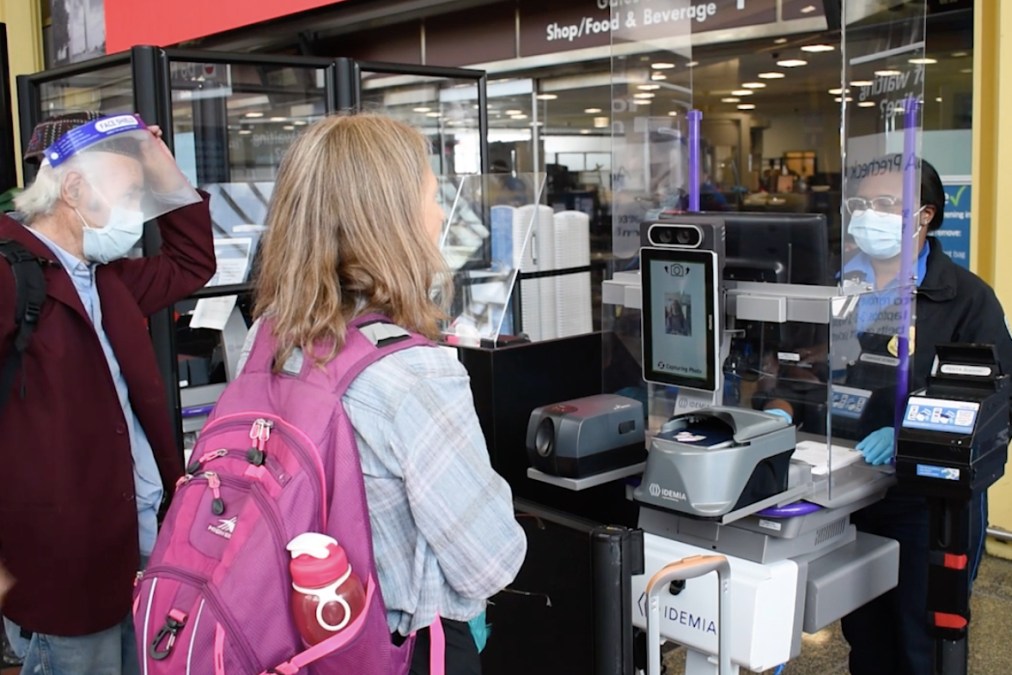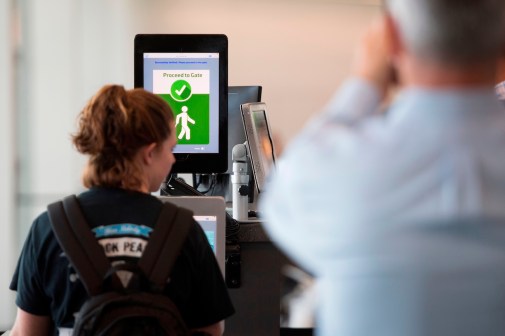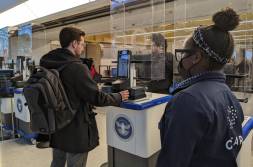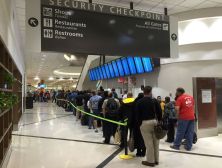TSA tests biometric ‘self-service’ scanners at Reagan National Airport

A biometric security program announced earlier this week by the Transportation Security Administration could allow travelers to move through security lines without the need to interact with a person, potentially reducing the spread of the coronavirus and speeding up airport security.
The pilot program, which will initially be limited to Ronald Reagan Washington National Airport, will allow travelers to have their photo taken by a tablet computer that automatically matches it to the photo on their chosen form of identification. Instead of handing their passports or state IDs to a TSA agent directly, travelers will insert the document into a scanner under the tablet, reducing the amount of in-person contact between themselves and TSA agents. Once the photo has been taken, a TSA officer sitting behind an acrylic shield will receive the face match, ID authentication and flight information on their computer and can choose to allow the traveler to proceed to the screening lane.
The scanners would also represent the most technical step so far by the TSA to reduce the spread of COVID-19 in airports, which have become ghost towns as air travel has plummeted. The Centers for Disease Control has warned against traveling by plane if at all possible to reduce the spread of the virus, and TSA has implemented several other hygienic measures, like requiring that all agents wear masks and gloves at all times, and regularly sanitizing touchpoints in the security area, like bins and handrails.
“In light of COVID-19, advanced health and safety precautions have become a top priority and part of the new normal for TSA,” TSA Administrator David Pekoske said in a press release. “As a result, we are exploring rapid testing and deployment of this touchless, self-service technology. At the conclusion of the pilot, we expect to be able to determine how positioning the new technology will allow passengers to use it themselves thereby providing a safer checkpoint experience, while adding significant security benefits.”
While the new physical barriers between travelers and TSA screeners are an effect of the coronavirus pandemic, the scanning technology is not, having previously been tested last September at McCarran International Airport in Las Vegas.
And facial recognition has been around in airports for several years, including several gates at National. But the TSA said that photographs taken in this new project won’t be saved after they’re used for verification. Travelers can also decline to have their photo taken, instead allowing the TSA to verify them visually against the scanned image of their ID.
Biometric scanning at airports has drawn the ire of privacy advocates, including the Georgetown Law Center on Privacy and Technology, which claimed in a 2017 report that a Department of Homeland Security biometric program would stand on “shaky legal ground” as it’s never been explicitly authorized by Congress. Facial recognition programs in airports across the country have expanded as the technology has become more refined, and have since caught passengers attempting to impersonate other travelers.






